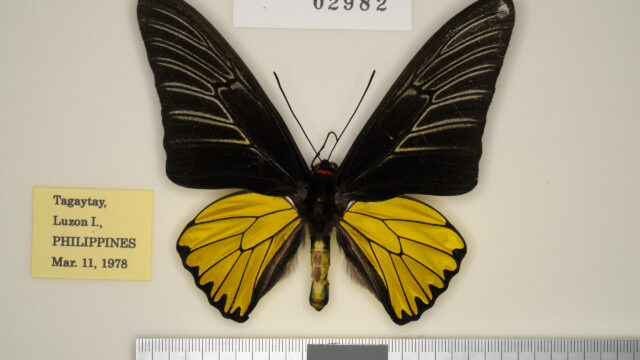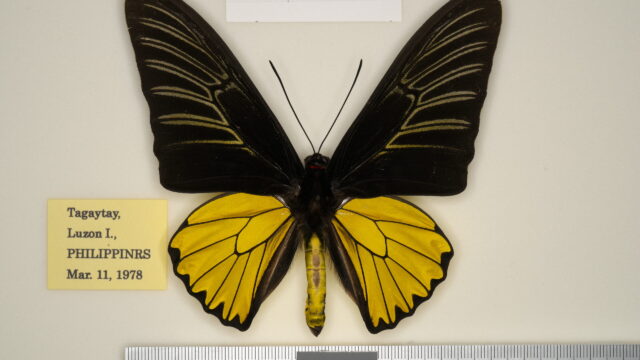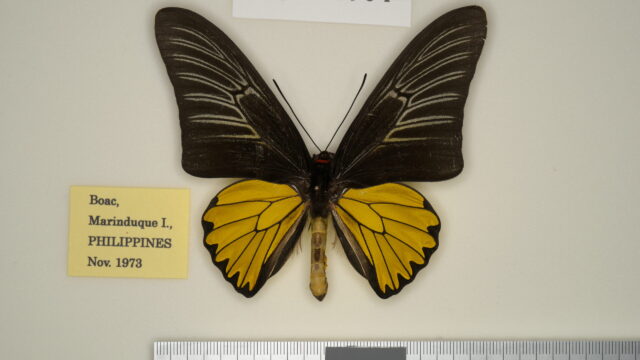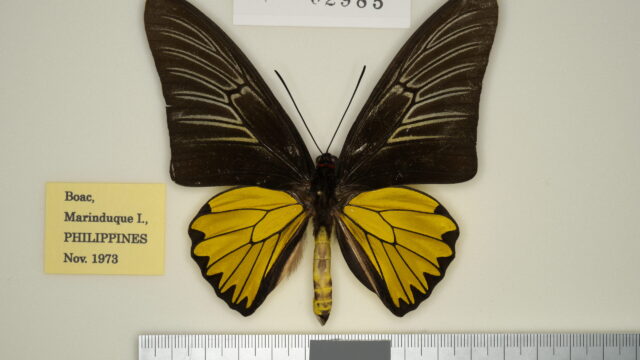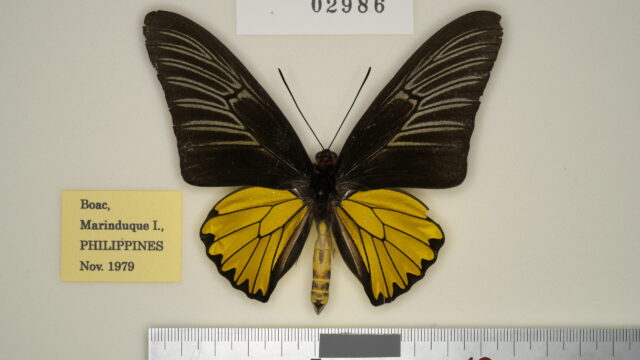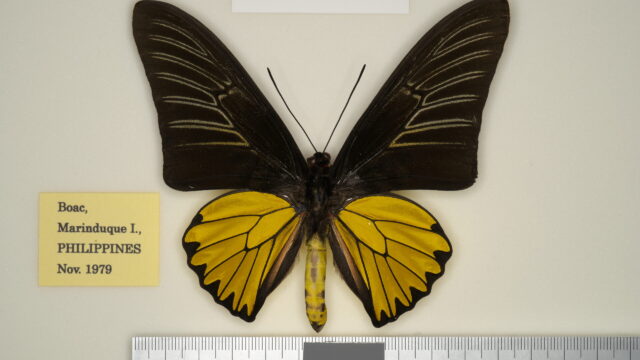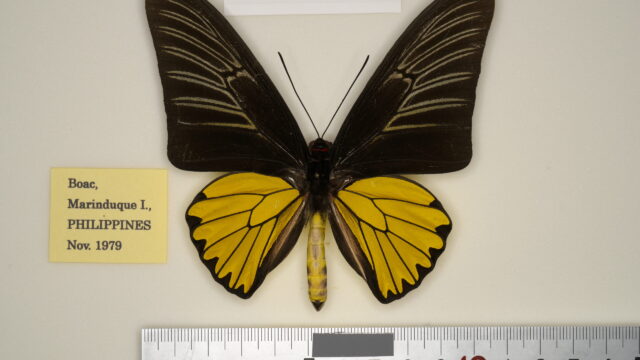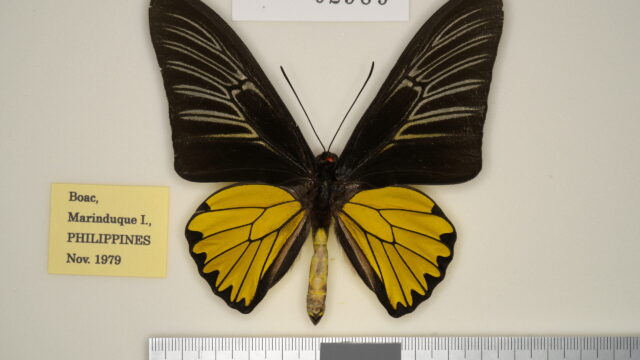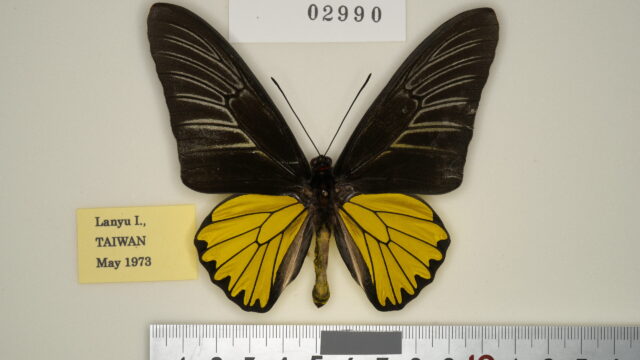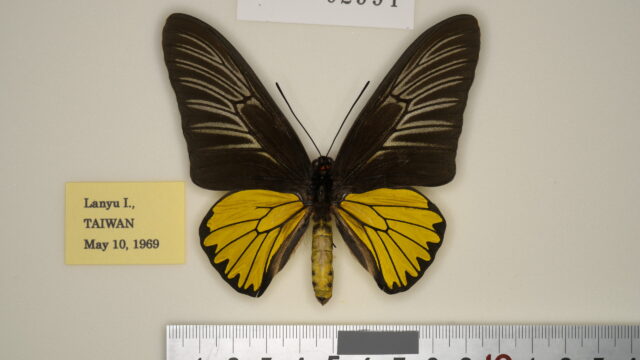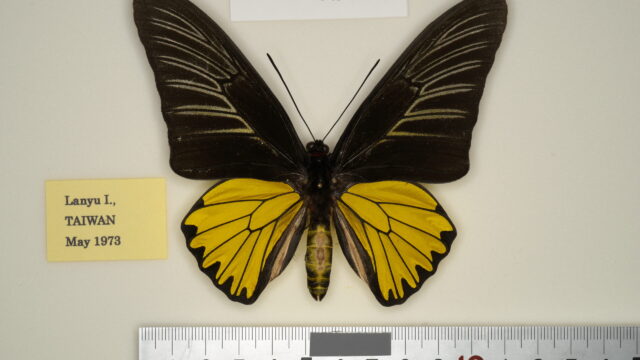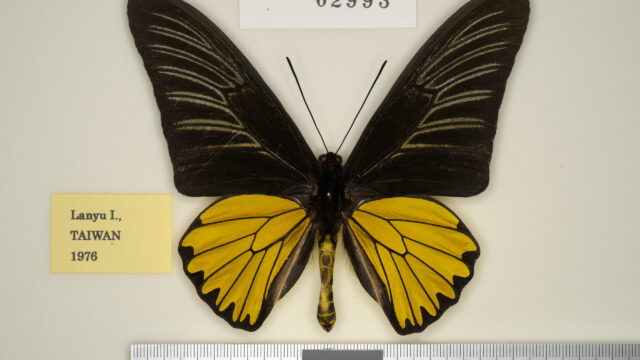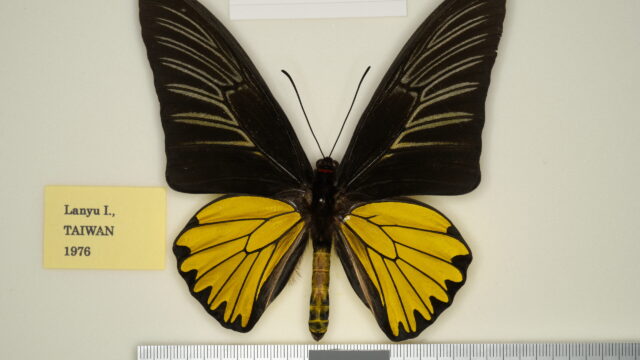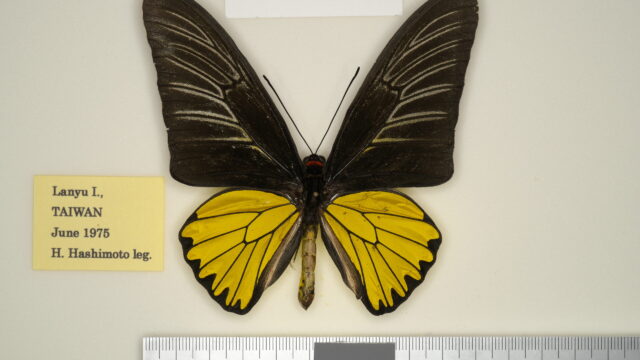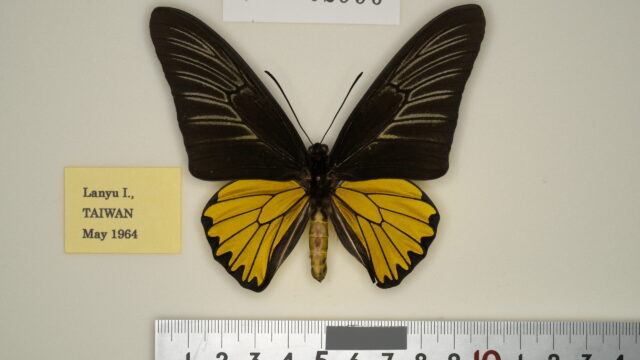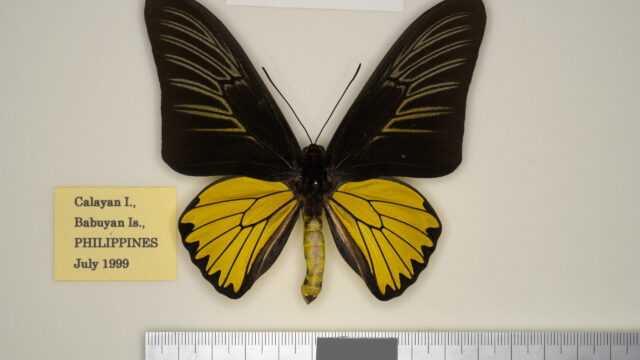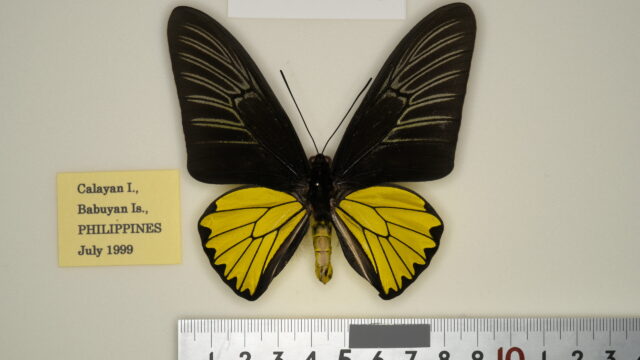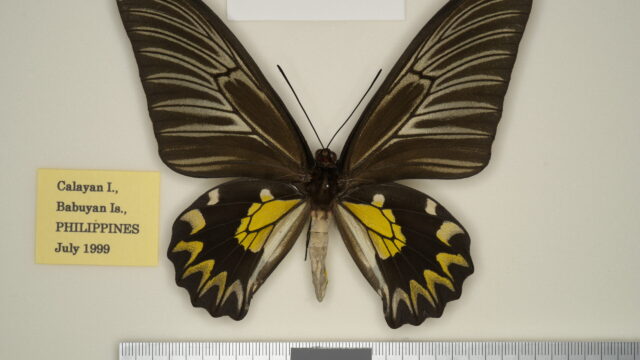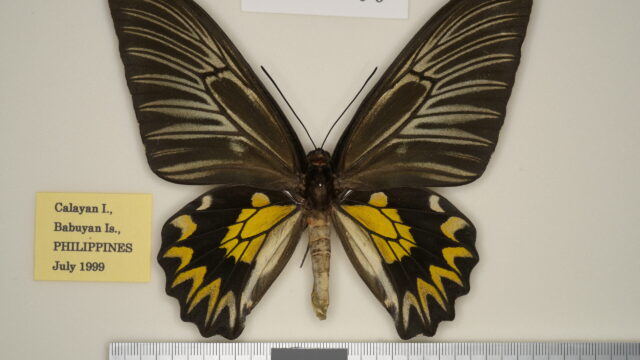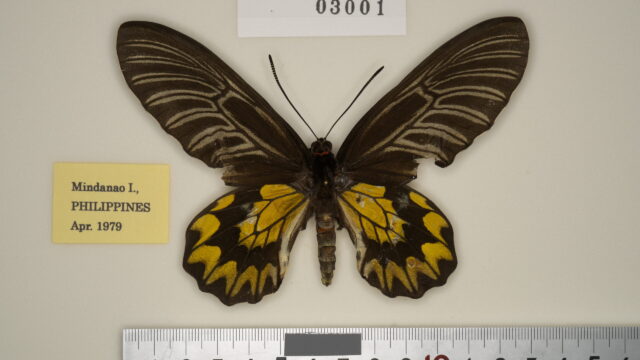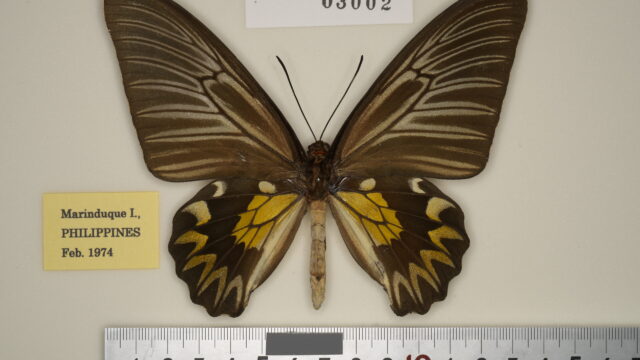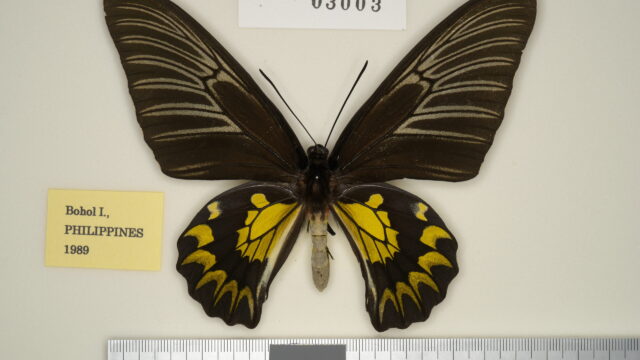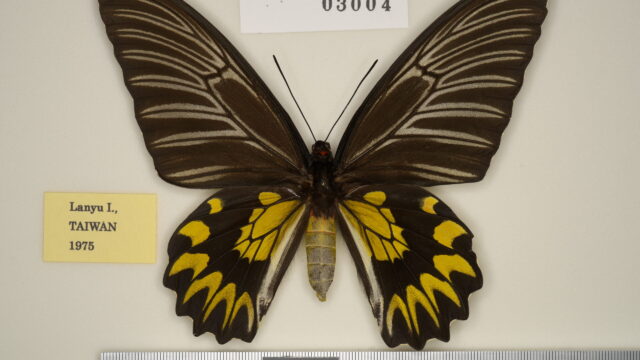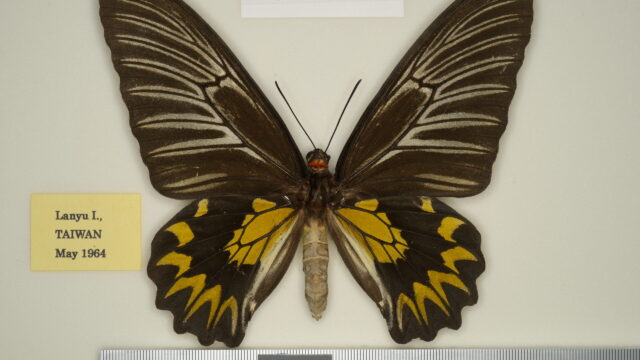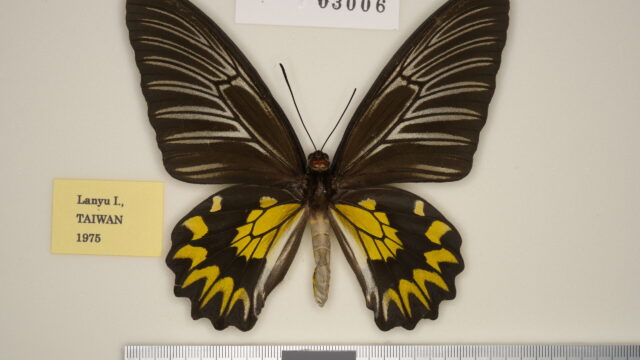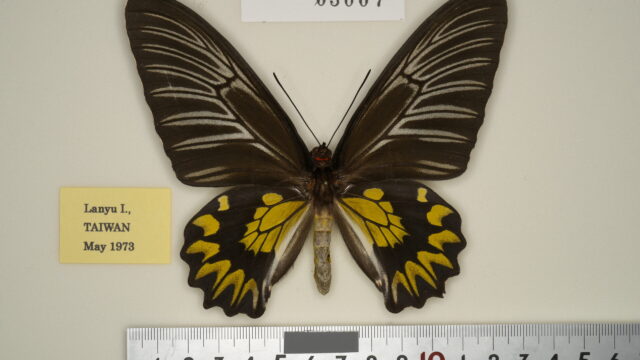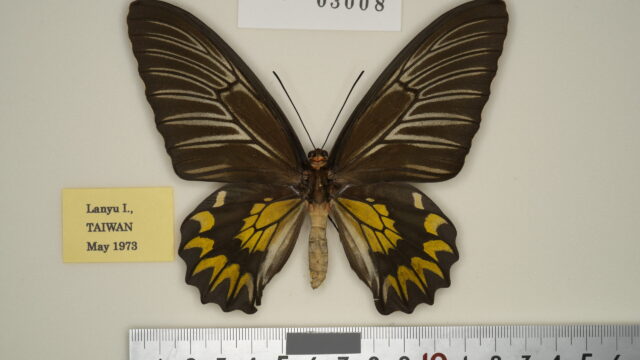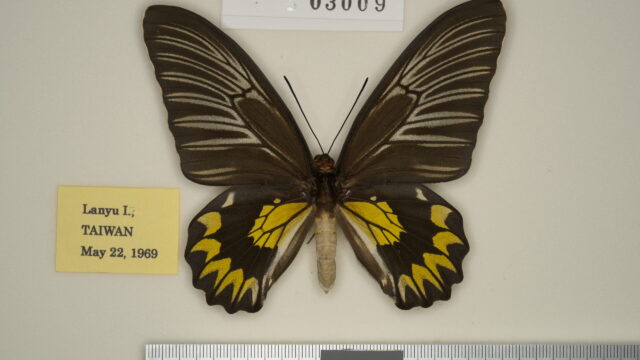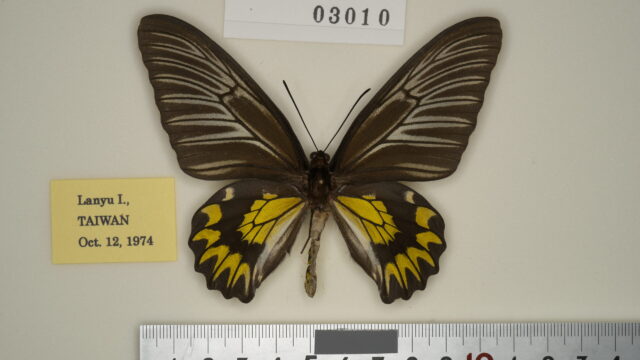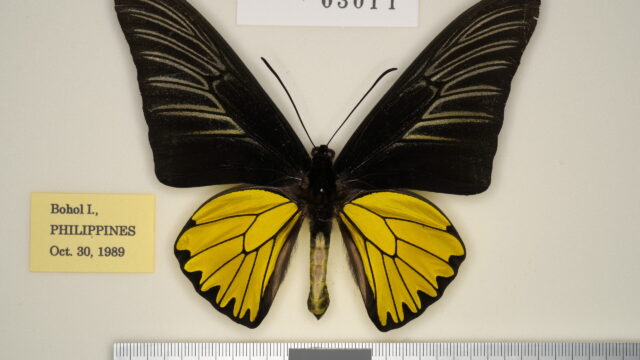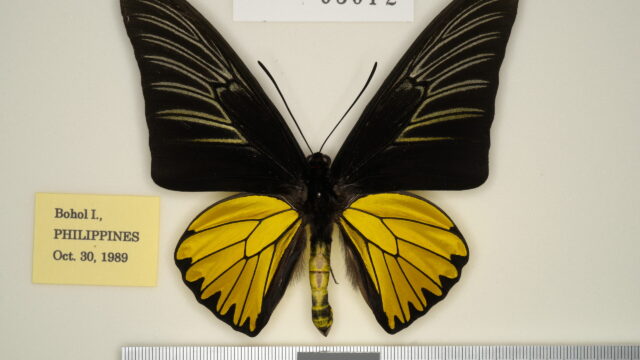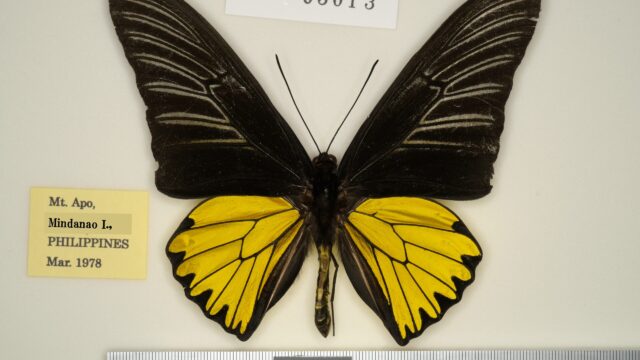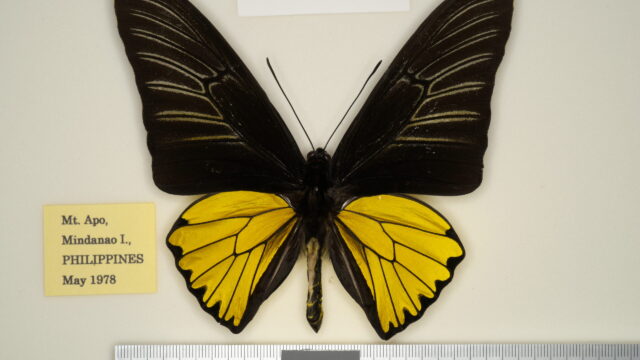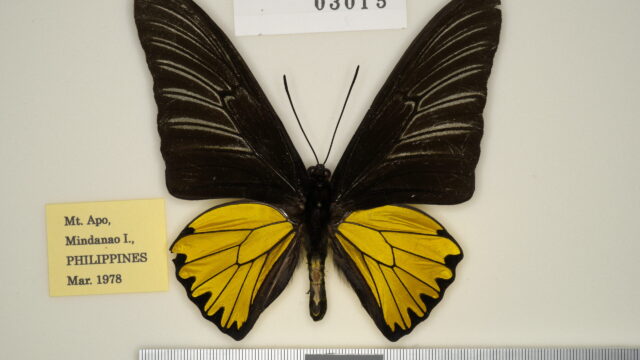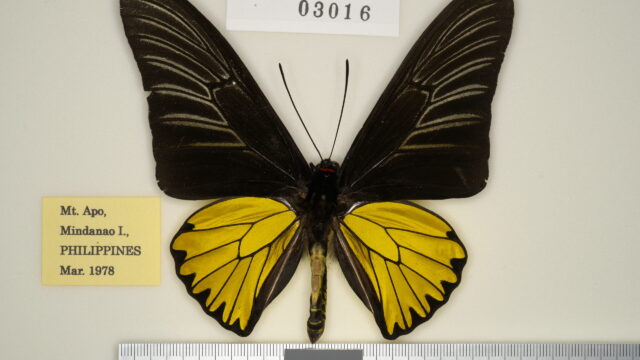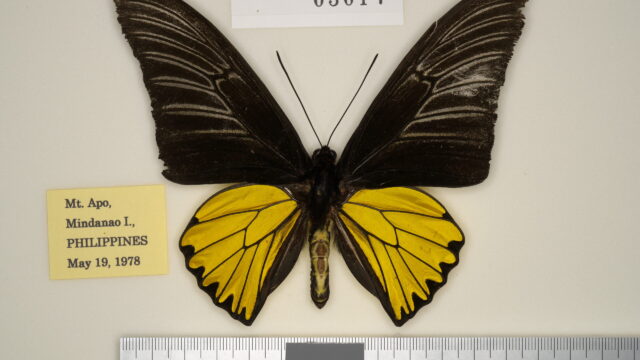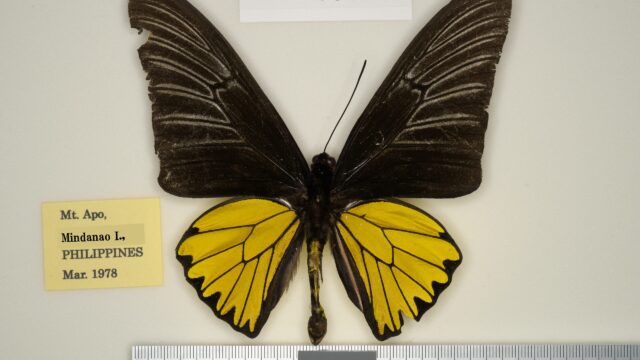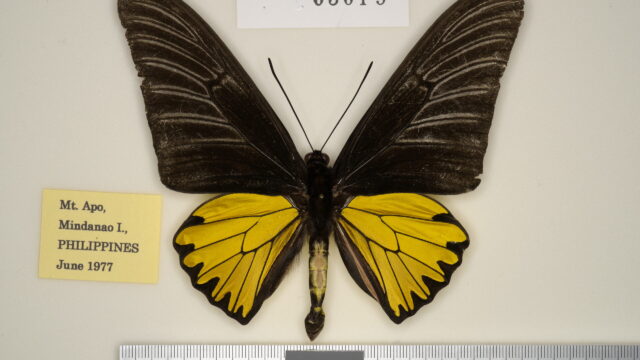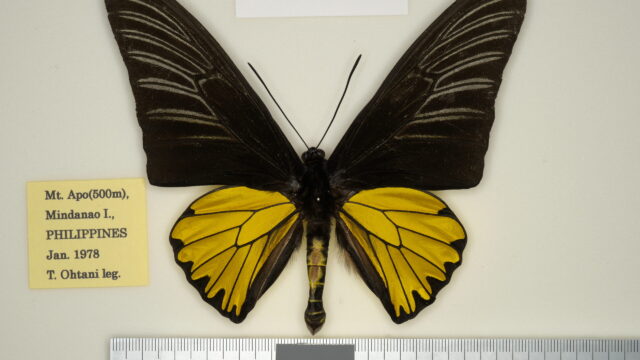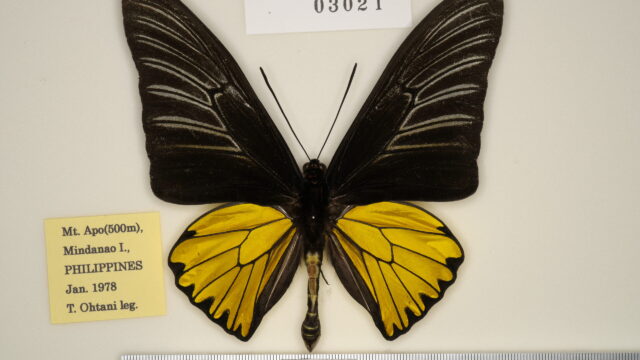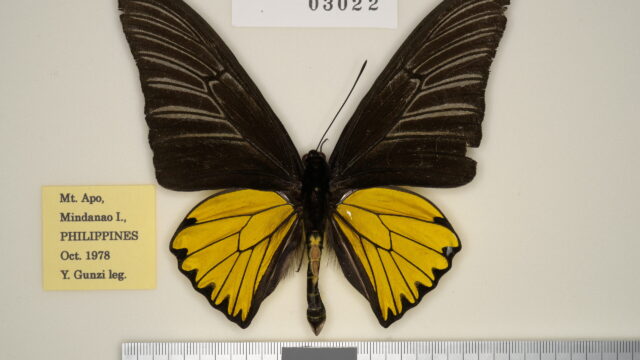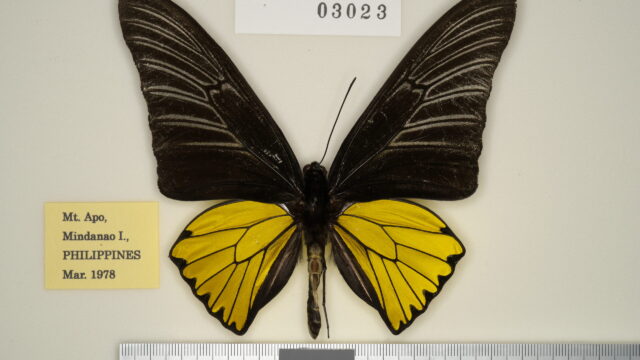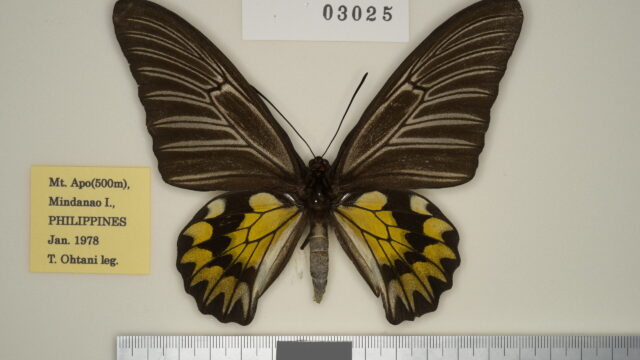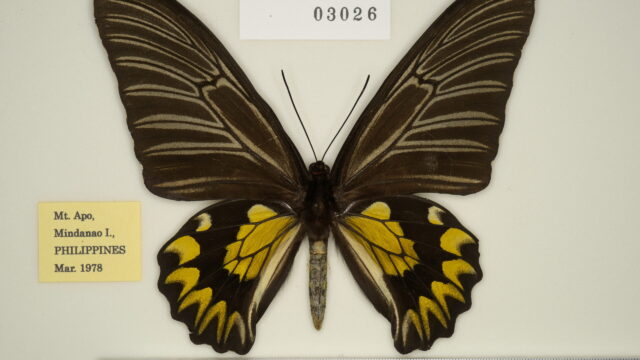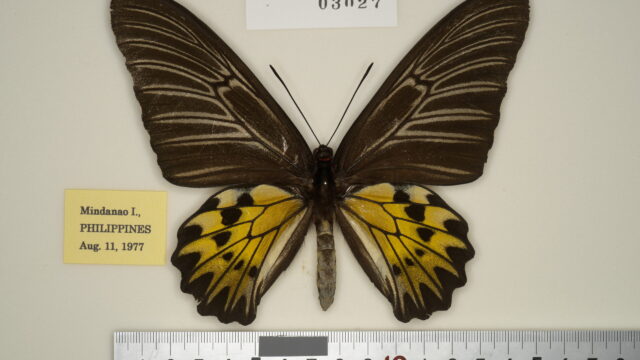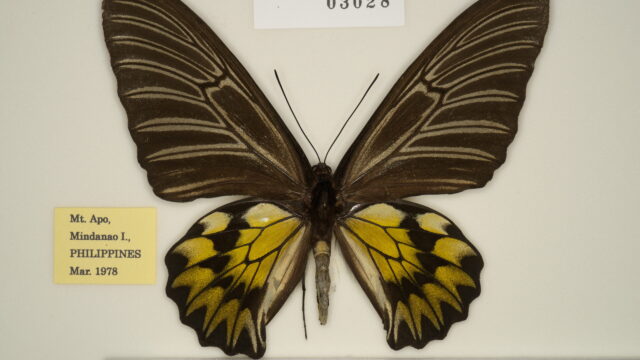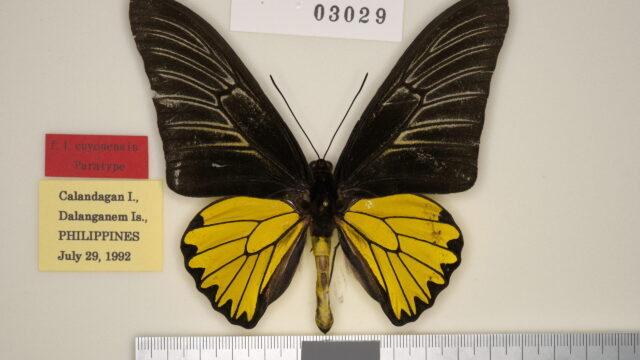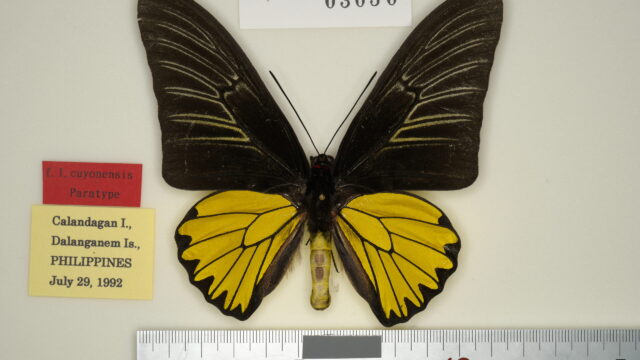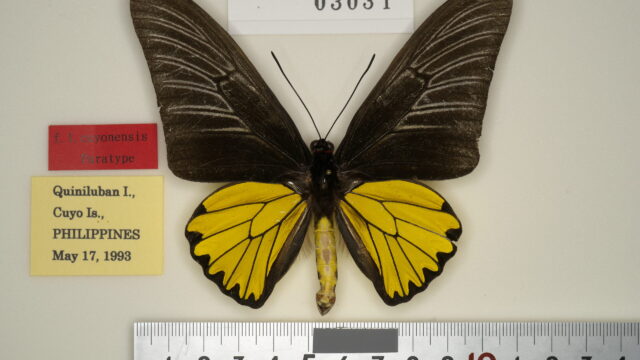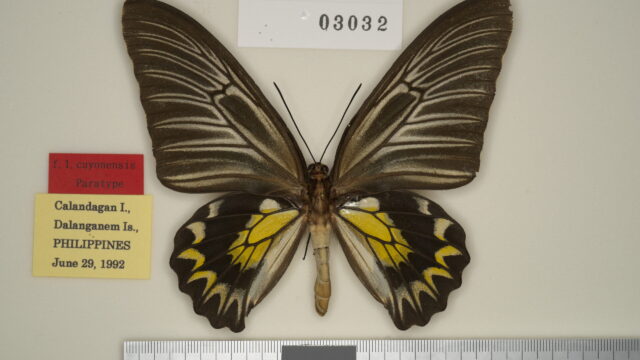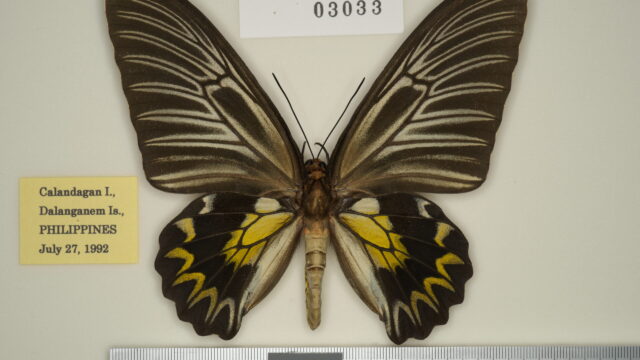15) Sp. magellanus (Felder, 1862)2) [♂, ♀]
= sonani (Matsumura, 1931)4) [♂, ♀] (Taiwan (Lanyu Is.))
(Distribution) [DCD 34], [Map 145]
TAIWAN: Lanyu; PHILIPPINES Batan Islands (Batan Is.), Babuyan Islands (Calayan Is., Fuga Is., Camiguin Is.), Luzon Is. (Mt. Cagua, Cagayan Peaks, Tubao, Dalisag, Maris Aurora (Baler Bay area), Wawa Dam, Manila, Los Baños, Tagaytay, Santo Tomas, Mt. Labo), Polillo Islands (Polillo Is., Jomalig Is.), Mindoro Is.(N. E. area), Marinduque Is., Catanduanes Is., Masbate Is., Samar Is.
(Vertical distribution)
0 – 1, 500 m. a. s. l.
(Episodes of discovery and original description)
It was described as a new species by Felder (1862) based on ♂ from Camiguin Island, Babuyan Islands, collected by Semper and ♀ from Luzon Island. The origin of the species name is not known, but it was probably named after the Portuguese navigator Ferdinand Magellan (1480?-1521).
(Characteristics)
It is a large-sized species distributed mainly in Philippines, although its distribution range includes Ranyu (Taiwan). Since the distribution area is longitudinally, there is some local variation but no significant variation. This species resembles Troides prattorum in that the semi-translucent gold patch on ♂ HW emits a fluorescent iridescence color in oblique light.
(Spotted pattern)
♂: FW acute apex and concave outer margin. Wing ground color is shiny black with narrow, distinct yellowish grayish-white vein stripes on V2nd – V9th, but the apex of the cell is only slightly fringed. HW also have acute apex and pointed anal angle. It differs from T. prattorum by having a narrower black outer marginal border, smaller black projections, the reddish-purple illusionary color rather than blue-green coloration of semi-translucent golden spot that occupy almost the entire HW, and the absence of black shading and black spots near the anal angle. The spots and coloration on the underside are nearly identical to that of the surface. Red hair tufts are present on the neck and lateral thorax. The upper surface of the abdomen is milky yellow with pale yellowish-brown spot. Under surface dark yellow.
♀: FW are blackish brown with gray vein-stripes on all wing veins and the cell-spot extending along the cell vein to the base. The yellow spots on HW are divided into two parts, that is the pale band and the submarginal spots, by a broad band by fusion of sagittal black discal spots and tall black projections. No phantom color in yellow spots on HW as in ♂. Reddish hairs are present on the neck and lateral thorax. The upper and lateral surface of the abdomen are grayish white, while the under surface yellow and black.
(Larval foodplant)
Aristolochia kankauensis, Aristolochia zollingeriana, Aristolochia sp. A (from Mindanao I.), Aristolochia sp. B. (from N. Luzon I.)3)
*f. loc. leyteanus Okano & Okano, 19836) [♂, ♀]
(Distribution) [Map 146]
PHILIPPINES: Letye Is. (Mt. Catmon, Baybay, Mahaplag, Hinunangan, Maasin), Panaon Is. (Mt. Caningag), Camotes Islands (Pacijan Is., Poro Is.).
(Characteristics)
Both sexes closely resemble f. loc. apoensis. Very few differences in the spots between them.
(Spotted pattern)
(From original description)
♂: The vein-stripe along V2nd on FW is reduced on both sides.
♀ : The cell-spot is indistinct and the vein-stripe along V1b is reduced on both sides.
f. loc. apoensis Okano & Ohkura, 19785) [♂, ♀]
(Distribution) [Map 146]
PHILIPPINES: Negros Is (N.-E. area), Cebu Is., Bohol Is., Siquijor Is., Camiguin Is., Mindanao Is. (Surigao, Mainit, Tandag, Agusan del Sur, Malitbog, San Vicente, Mt. Kitanglad, San Miguel, Mt. Kalatungan, Compostela, Mt. Tagubud, Cotabato, Baguio in Davao, Mt. Apo, Kidapawan, Mt. Matutum, Kiamba).
(Episodes of discovery and original description)
The first description of the species from Mindanao seems to have been given by Semper (1891), who assigned it to the original subspecies; Okano and Ohkura (1978) gave the holotype ♀ collected at Mount Apo, Southern Mindanao, in June 1977, and 13♂♂, 13♀♀♀ collected there between March and June 1977; 1♂, 1♀ collected in Northern Mindanao in March 1978; 3♂♂, 1♀ collected in Northeastern Mindanao in May 1977; 2♂♂ from Bohol; 6♂♂, 3♀♀ collected in Leyte in March 1976, February and December 1977, and April 1978, respectively. The description is based on paratypes of a total of 25♂♂ and 18♀♀. The name “apoensis” is a reference to Mount Apo.
(Characteristics)
Many large individuals are characterized by blacking of the abdomen.
(Spotted pattern)
♂: resembles the nominotypical subspecies but is slightly larger and has larger black spots on the lateral abdomen.
♀: Large size as well as ♂. Blackened abdomen, dark gray on upper surface, with large black spots on lateral sides.
f. loc. cuyoensis Deslisle, 20011) [♂, ♀]
(Distribution) [Map 146]
PHILIPPINES: Linapacan Is., Cuyo Islands (Quiniluban Is., Dit Is., Tagauyan Is., Cocoro Is., Cuyo Is.), Dalanganem Islands (Calandagan Is.).
(Episodes of discovery and original description)
It was described as a local form of T. magellanus based on 10♂♂ and 12♀♀collected in July 1992 from Cuyo Island, Cuyo Islands, in the Deslisle Collection, and 3♂♂ and 1♀ collected in 1992 and 1993 from Calandagan Island, Dalanganem Islands, in the Ohya Collection. This local form is named after its habitat, the Cuyo Islands.
(Characteristics)
Newly described local form with the most westly distribution of the sp. magellanus. Both sexes have distinct FW vein-stripes. The ♂ is characterized by a pale abdomen and the ♀ by a pale thorax and abdomen.
(Spotted pattern)
♂: Characterized by distinct cell-spot and vein-stripes on FW, and by a pale abdomen.
♀: FW cell-spot extends widely to the base, and all vein-stripes reach the cell. The black discal spots on HW are largely fused together to form a band. Characterized by pale milky brown upper surface of the thorax and abdomen.
